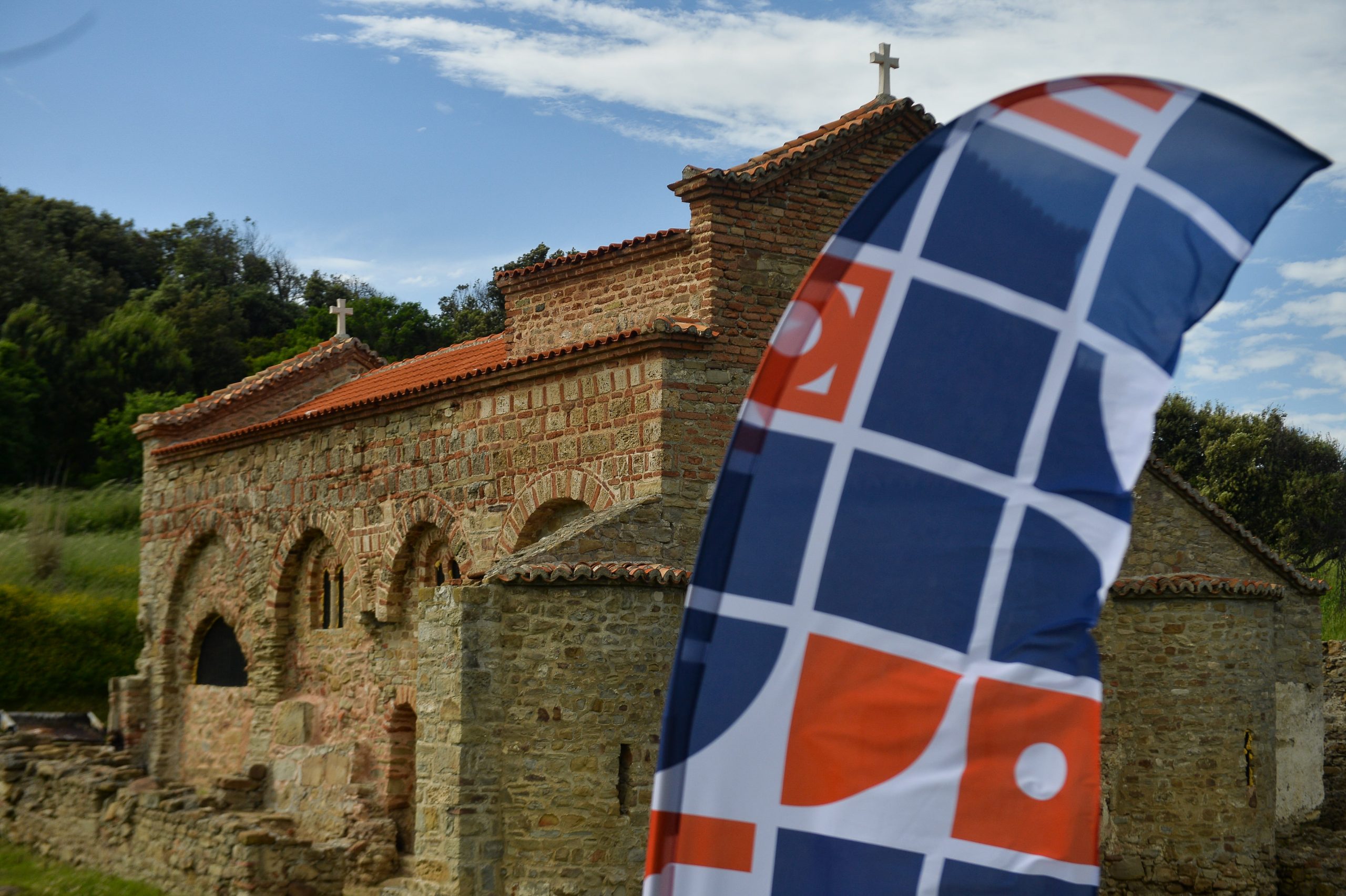St. Anthony Church, Cape of Rodon

History and Background
St. Anthony’s Church in Cape Rodon has an idyllic location on the peninsula, just 60km from Tirana, set within an environmentally and culturally diverse landscape (with the church itself being located in a protected area). The church is believed to be primarily associated with a Byzantine Monastery dedicated to St. Mary, which was located in the vicinity of the present-day church (according to historical documents dated from 1418). At this point the church’s architectural style was Romanesque-Gothic. From a later source (1599) it is known that the monastery was dedicated to St. Anthony of Padua and was within the sphere of influence of the Holy Roman Catholic Church at that time, specifically with the Franciscan Order. The church and the monastery remained in use until 1852 when the building complex was destroyed from a strong earthquake, and was in ruins until 1978. The church and portions of the monastery were reconstructed as the object that we see today by the year 2000.
The relatively simple interior includes a number of wall paintings, a representation of a two headed eagle and a separate horse with a female rider, which has been interpreted as the sister of Albania’s national hero Skanderbeg, Mamica.
A number of surviving extensive underground bunkers and storage depots can also be observed (and visited) on the summit of the Cape to the west of the church. The whole Cape was a restricted military area during the Communist era.
As a fine surviving example of regional religious and Byzantine architecture situated in a unique location, it was registered as a Religious Building with the status of ‘’Cultural Monument of first category’’ in 1963.
Previous works / interventions
Upon the discovery of the ruins, and after their initial documentation, the ruins were partially consolidated through interventions conducted in 1978. In 2000 supported with funds from the Federal Republic of Germany, the church was reconstructed. The portions of the northern walls and easter apse wall were completely reconstructed. The remains of the wall paintings in the interior of the church were further consolidated.
Condition of the existing building
- Degradations of the Church of St. Anthony
- Damage to stone and brick as a result of atmospheric agents.
- Degradation of bonding material and cracks in masonry.
- Soil deposits.
- Inadequate pointing.
- Humidity and leaking in the floor structure.
The proposed scope of works included:
- Filling of the cavities (cracks) in brick masonry.
- The stone facades of the main facade need consolidation, cleaning, grouting and replacement of some damaged stones.
- Floor restoration.
- Wall painting emergency consolidation.
- Stormwater management
- Electrical works.
Items of work added during implementation:
(based on requests of Minister of Culture and Fransiscan Church)
- 240m perimetral wall around the Church.
- Candle holder at the entrance of the church.
- Additional external lighting on the north facade.
- Interior lighting more suitable for illuminating wall paintings.
Risk Assessment
Based on the risk assessment scoring, the project is a low risk infrastructure.
Contract Value and Start Date
Within the frame of the EU4Culture Programme, the Church at Rodon represents one of the early phases of projects prioritized and implemented as part of the overall 45 months programme. The total value of contracted works for the project is 10,822,931ALL (Euro 89,100). The project commenced in September 2021 and the works were finalized in February 2022.
Labor Force Engagement on Site / Employment Demographics
The total number of workers and conservation specialists employed on site is dependent on the specific type of work being undertaken to meet the needs of project implementation. On average, eleven (11) workers have been employed on a daily basis, in addition to a number of experts (2) including a conservation engineer and a historic works of art conservator, specifically working on ensuring the fragile wall paintings in the apse of the church are appropriately protected during all rehabilitation works.
Revitalization
The significant architecture and history of the church, its proximity to protected natural areas , the coastline and other historic monuments (including Skandberg / Rodoni Castle and extensive surviving Communist period bunkers on the summit of the cape), will be highlighted through communication by UNOPS, encouraging national and international tourists to visit from the nearby hubs of Durres and Tirana.



